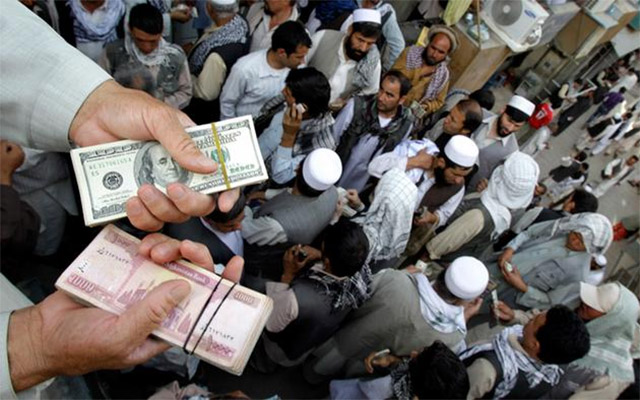Afghanistan may have seen muted economic growth in recent years; however impetus on specific drivers of growth can turn the clock around. If it wants to grow its economy from the current ~$21 billion to $50 billion by 2025, it would have to target a stellar 11% CAGR. That sounds daunting, but many nations have achieved decadal double-digit growth in their journey. Even India’s Maharashtra state has set a target of 15% CAGR to reach $1 trillion by 2025. A high, yet achievable, target pushes the commitment from the politicians to realize the economic agenda. But to what extent should Afghanistan focus to grow each growth-driver to realize this target? This is what we explore here.
Services-sector: ~56% of Afghanistan’s GDP is estimated from services, same as its eastern neighbour. This is less than the average ~60-70% seen in most emerging markets. If Services have to make up ~65% of its GDP by 2025, it would have to grow at a 14% CAGR, higher than the estimated GDP growth. This makes it a vital driver of future growth. Afghan services are largely based on trade and transport. While these would remain priorities, deepening the services-sector through the digital economy would bring efficiencies in public-services delivery across the hinterland, bring more citizens into its organized economy and reduce the corruption of a cash-based economy. It would ensure delivery of subsidies to the intended recipients, like India’s Direct Benefit Transfer. Services should include improving the reach of skill-centres, to improve employment prospects. All these would expand its addressable consumer-base.
Industry-sector: ~22% of Afghan GDP is estimated to come from industry, less than the average ~30% seen in large emerging markets. So if its industry has go up even to a ~25% proportion, it would have to grow at a 13% CAGR. This makes it the most vital driver for future growth. Afghanistan’s gross investment at ~18% of GDP has lagged the ~35-40% seen in China, Malaysia and Thailand in their initial years of industrialization. If it intends to push this towards ~35% to drive capacity-addition, its investment has to grow at a sheer 21% CAGR to make up for the historical lag. It makes it inevitable to partner with countries that can fund this journey. Investment also correlates with productive imports like machinery. In Afghanistan, import comprised a high ~46% of GDP, more than double the share of investment in the economy. Industrializing nations saw their share of imports to be ~60% of their share of investment. This implies a portion of Afghan imports are not for productive purposes like investment, and these should reduce overtime. So import should grow at a 1% CAGR to hold its share at ~21 by 2025 (i.e. 60% of the share of investment, estimated at 35% of GDP). That would imply most imports are only for productive use contributing towards investment. So where should investments go? The country needs economic corridors, infrastructure both hard and soft, affordable housing for the middle-class and industry clusters in the underdeveloped regions for inclusive growth. But this also means addressing the Ease of Doing Business parameters, where it lost its rank by 19 places since 2014.
Agriculture-sector: ~22% of Afghanistan’s GDP, in line with the South Asian LDCs and higher than the sub-10% share in most large emerging markets. The crux here is to improve farm-productivity, as agriculture employs more than 60% of its workforce. If it has to reduce agriculture’s share to even 15% by 2025, it would grow at a 6% CAGR. But this has to be backed by productivity improvement. This also includes re-skilling unproductive labour for high-growth sectors like construction through skill-training centres like India’s NSDC. It means investing in irrigation and market linkages to maximise yield and ensure the farmer gets correct prices. Agro-produce can also contribute significantly to its export.
Export-sector: Only ~7% of Afghan GDP is estimated to come from exports, far less than any peer. Its export has to grow at a monumental 28% CAGR till 2025, if it has to meet the forex demand for import and make trade imbalance nil. It has an advantage, because the AFN dropped by ~4% against the USD last year. At the same time, further Free Trade Agreements and export-schemes should open more opportunities. It should also push services-sector export and not rely only on merchandise export, since that would marry its need to push services-sector too.
Consumption-sector: Afghanistan has a high share of private consumption at ~120% vs. ~60% in large emerging markets. Ethiopia, Rwanda, Uganda and Nepal all have a similar per-capita, but they spend less relatively. Dependence solely on external borrowing is not healthy for the forex and collateral position, especially when imports would continue. It needs to push up its savings rate from ~23% to 30%+ by energizing its domestic financial sector with more products, assets, talent and regulations. That would incentivize more saving and postponing consumption.
All in all, these segmental growth-estimates to target a GDP of $50 billion by 2025 may sound over-ambitious. But it may not be unachievable, if specific drivers like industry, investment, services-export and farm-productivity are given the extent of push as derived here.
Home » Opinion » Afghanistan can be a $50 billion economy by 2025
Afghanistan can be a $50 billion economy by 2025
| Sourajit Aiyer

